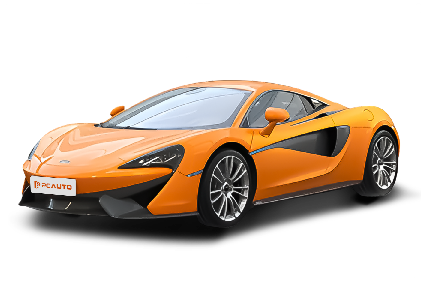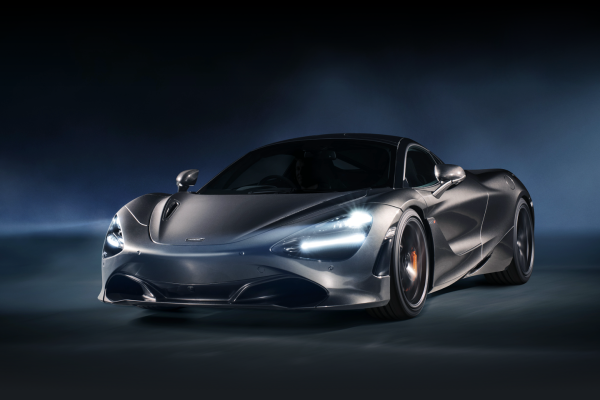Q
Does the McLaren 570S have an automatic transmission?
The McLaren 570S is equipped with a 7-speed dual-clutch transmission that features an automatic shifting function, so the vehicle can operate in automatic mode. Its dual-clutch transmission enables smooth gear changes, enhancing both performance and driving experience. Moreover, it can shift gears automatically to adapt to various driving conditions, such as normal city driving or high-speed cruising.
However, this automatic functionality does not impair the driving experience. Drivers can also take control and shift gears manually if they prefer a more hands-on approach—for instance, when on a track or seeking a more enjoyable driving on winding roads. With its combination of automatic and manual-shift capabilities, the McLaren 570S caters to a wide range of driving preferences among car enthusiasts.
Special Disclaimer: This content is published by users and does not represent the views or position of PCauto.
Related Q&A
Q
How many gears does McLaren 570S have?
McLaren 570S has 7 gears. It is equipped with a 7-speed dual-clutch transmission. This type of transmission offers several advantages. Dual-clutch transmissions can provide extremely quick gear shifts, allowing for smooth power delivery during acceleration. For the 570S, a sports car known for its high-performance capabilities, the 7-speed dual-clutch gearbox helps it achieve rapid acceleration, such as its official 0-100km/h acceleration in just 3.2 seconds. The multiple gears also enable the engine to operate with its optimal power output and torque range across different driving conditions, whether it's cruising at high speeds on open roads or during intense track driving where quick gear changes are crucial for maintaining speed through corners.
Q
Is 570S a convertible?
The McLaren 570S has a convertible version, known as the 570S Spider, priced at RM 2,033,600. However, there's also a coupe body style, the 570S Coupe, priced at RM 1,870,570. Therefore, strictly speaking, the 570S isn't inherently a convertible as the name encompasses both body types. The convertible 570S Spider allows drivers to enjoy open-top motoring, feeling the wind and experiencing the sounds of the road more directly. It features a power-operated soft-top that can be raised or lowered at the touch of a button. The coupe version, on the other hand, offers a more aerodynamic and enclosed driving experience. Both models share many mechanical components, such as the 3.8-liter twin-turbocharged V8 engine producing 570 PS, delivering the excellent performance and typical handling characteristics of McLaren sports cars.
Q
Is McLaren 570S good for daily use?
The McLaren 570S can be suitable for daily use to some extent. With the starting price of RM 1,870,570, it offers both excellent performance and certain practical features. It has a 3.8L twin-turbocharged V8 engine with 570 PS, accelerating from 0 to 100km/h time in just 3.2 seconds. Despite being a sports car, it has some practical elements. It has features like keyless operation, dual-zone automatic climate control, and a touchscreen. The interior has comfortable seats with good support, and there's some storage space. It also has safety features such as ABS, stability control, and multiple airbags. However, it has a relatively low ground clearance of 93 mm, which might pose challenges on uneven roads. In addition, with petrol consumption of 10.7 L/100km , it is not very fuel-efficient. But overall, if you can overlook these minor drawbacks and afford its running costs, it can be used for daily driving while still providing an enjoyable driving experience.
Q
What type of engine is 570S equipped with?
The 570S is equipped with a 3,800 mL (3.8 L) V8 twin-turbocharged engine. This engine adopts a turbocharged intake system, capable of producing a maximum output of 570 horsepower. It reaches peak power at 7,500 rpm and delivers maximum torque between 5,000 and 6,500 rpm. The combination of the V8 configuration and twin-turbocharging ensures robust power delivery and rapid acceleration, which enables the 570S to achieve an official 0-100 km/h acceleration time of just 3.2 seconds and a top speed of 328 km/h. The engine's design perfectly aligns with the character of sports car, offering an enjoyable driving experience. Additionally, technologies such as direct fuel injection may be employed to enhance fuel efficiency and vehicle's performance.
Q
What's the top speed of McLaren 570S?
The McLaren 570S can reach a top speed of 328 km/h, making it a high-performance sports car capable of rapid acceleration and achieving extreme velocities. It is powered by a 3.8-liter V8 twin-turbocharged engine, generating 570 horsepower, which helps the vehicle achieve this impressive top speed. Whether it's the Coupe or Spider version, both can reach this high velocity. With a 0-100 km/h acceleration time of just 3.2 seconds, the 570S not only has a high top speed but also offers rapid acceleration. Its excellent performance perfectly show McLaren's engineering philosophy of creating a sports car that combines speed, power, and precision handling for an enjoyable driving experience.
Q
Is McLaren 570S an AWD model?
No, McLaren 570S is not an AWD (All-Wheel Drive) model. It is a rear-wheel drive sports car. This rear-wheel drive layout is common among many high-performance sports cars as it provides a more direct connection between the engine and the driven wheels, contributing to a more engaging driving experience and improved weight distribution for enhanced handling. Powered by a 3.8-liter twin-turbocharged V8 engine producing 570 PS, the rear-wheel drive configuration enables the McLaren 570S to achieve an official 0-100 km/h acceleration time of 3.2 seconds and a top speed of 328 km/h. The rear-wheel drive system, combined with its advanced suspension and braking systems, allows the 570S to deliver exceptional performance both on the road and the track.
Q
Is the McLaren 570S twin-turbocharged?
Yes, the McLaren 570S is indeed a twin-turbocharged model. It is powered by a 3.8-liter twin-turbocharged V8 engine, which significantly enhances the vehicle's power output. The twin-turbo system enables more efficient induction, delivering superior performance.
The 570S's engine generates substantial power and torque, allowing the vehicle to achieve a top speed of 328 km/h and accelerate from 0 to 100 km/h in just 3.2 seconds. Twin-turbo technology reduces turbo lag, providing immediate and consistent power delivery during acceleration, which results in exceptionally responsive performance whether on the road or track, creating an enjoyable driving experience.
Q
Is 570S faster than 650s?
No, the 570S is not faster than the 650S. Instead, the McLaren 650S has a higher top speed and shorter acceleration time. The 650S can reach a top speed of 340 km/h and accelerate from 0 to 100 km/h in just 3.0 seconds. In contrast, the 570S has a top speed of 328 km/h and an official 0-100 km/h acceleration time of 3.2 seconds. The differences in speed and acceleration are caused by the 650S's more powerful engine, which produces 650 horsepower, while the 570S's engine produces 570 horsepower. It's important to note that these are official figures, and actual performance may vary depending on driving conditions and other factors. However, in general, the 650S is faster. If you're looking for maximum speed and acceleration, the 650S would be the better choice. But if you prefer a more comfortable and practical sports car for everyday driving, the 570S may be better as it still offers impressive performance and is suitable for daily use.
Q
How much does it cost to maintain 570S?
The maintenance cost of 570S can be different. For routine minor maintenance at a 4S shop, it's approximately RM 7,300. If more parts are replaced, the cost may rise to RM 13,000, and with additional inspections, it could be close to RM 20,000. At a reliable local shop, a basic minor maintenance, like changing the oil and oil filter, air filter, etc., might cost around RM 1,800. Using fully synthetic oil for just an oil change typically costs about RM 2,000. A comprehensive minor maintenance including oil, oil filter, and air filter replacement is around RM 7,600. The maintenance cycle for 570S is 10,000 kilometers. Overall, the annual maintenance cost for the first three years is around RM 100,000 - RM 150,000, and after three years, it's RM 200,000 - RM 300,000. Keep in mind that these are just estimates and actual costs may vary based on factors such as vehicle usage, location, and parts condition.
Q
Is McLaren 570S road-legal?
McLaren 570S is road-legal. It meets all necessary requirements for public road use. Its systems and components comply with road regulations, including standard safety equipment such as ABS (Anti-lock Braking System), electronic stability control, autonomous emergency braking, and multiple airbags. These safety systems are essential for ensuring safe on-road operation. The vehicle runs on the correct fuel type (petrol) and undergoes proper registration procedures for legal road use. With prices of RM 1,870,570 for the Coupe and RM 2,033,600 for the Spider, owners can complete registration through official channels to legally drive on public roads while enjoying its high-performance capabilities - including a top speed of 328 km/h and 0-100 km/h acceleration in 3.2 seconds - all within legal limits.
Latest Q&A
Q
What is the difference between the 2024 and 2025 BMW 5 Series?
There are some differences between the 2024 and 2025 BMW 5 Series models. In terms of pricing, the 2024 520i starts at RM 332,800, with the 520i M Sport variant coming in at RM 349,800. The 2025 530i M Sport, on the other hand, is priced at RM 399,800.
Under the hood, the 2024 520i engines deliver either 210PS or 208PS, while the 2025 530i M Sport ups the ante with a 258PS powerplant. Performance-wise, the 2024 models top out at 230km/h and sprint from 0-100km/h in 7.5 seconds. The 2025 model pushes that top speed to 250km/h and shaves the 0-100km/h time down to just 6.2 seconds.
Looking at the specs, some 2024 trims have rear seats with manual adjustments or fixed configurations, whereas the 2025 model gets a 40:20:40 split-folding rear seat setup. Audio systems also see an upgrade: most 2024 models feature Harman Kardon speakers, while the 2025 model steps up to a Bowers & Wilkins surround sound system.
Additionally, the 2025 5 Series hit dealerships on March 13, 2025, and comes with a 2-year unlimited mileage warranty. The 2024 models first arrived on September 2, 2024.
Q
How much is insurance for a 2024 BMW 5 Series?
The insurance cost for the 2024 BMW 5 Series in Malaysia varies based on several factors, typically ranging from RM5,000 to RM15,000 annually. The exact amount depends on the vehicle model (such as 520i, 530e, or M550i), engine displacement, the owner's age, driving record, type of policy (comprehensive or third-party), and the insurance company's discount policies. For instance, the high-performance M550i, with its higher repair costs, will have significantly higher premiums than the entry-level 520i, while the hybrid 530e may qualify for partial insurance discounts due to its eco-friendly features. Additionally, Malaysia's insurance market is influenced by the No Claim Discount (NCD), where drivers with consecutive claim-free years can enjoy a maximum 55% reduction in premiums. It's advisable to obtain accurate quotes through insurance company websites or comparison platforms before purchasing a car, and also to understand the additional services offered by Malaysian car insurance, such as roadside assistance or windscreen coverage, as these details can impact the final decision. Notably, luxury car insurance usually includes higher third-party liability coverage limits to comply with local regulatory requirements, and owners can also adjust the excess amount according to their needs to balance premium costs.
Q
What is the maintenance cost of a 2024 5 Series?
The maintenance costs for the 2024 BMW 5 Series in Malaysia can vary depending on the specific model and driving habits, but generally speaking, the regular servicing fees for the first 3 years of a new car are roughly between RM3,000 to RM5,000 per year. This depends on the chosen original maintenance package and the actual mileage driven. BMW offers various maintenance plan in Malaysia, allowing owners to opt for one-time payment or installment plans. These packages typically cover basic items like oil changes, filter replacements, and brake inspections. If the vehicle is equipped with more high-tech features, such as active suspension or a hybrid system, the long-term maintenance costs might be slightly higher. However, BMW's after-sales service network in Malaysia is quite comprehensive, with many authorized service centers capable of providing professional maintenance and repair services. To reduce long-term ownership costs, it's advisable for owners to follow the manufacturer's recommended regular maintenance schedule and use genuine parts. This not only extends the vehicle's lifespan but also helps maintain a good resale value. Additionally, given Malaysia's hot and humid climate, owners should pay extra attention to maintaining the air conditioning system and battery to ensure the vehicle always stays in optimal condition.
Q
How much is a used BMW 5 Series 2024?
In the current Malaysian market, used 2024 BMW 5 Series models aren't widely available yet due to the new car's relatively recent launch. However, based on the market trends for used BMW 5 Series of similar model years and conditions, prices typically range from RM250,000 to RM350,000. The exact price depends on factors like trim level, mileage, maintenance history, and whether the original factory warranty is still valid. For instance, higher-spec models like the 530i M Sport might be closer to the upper end of that range, while entry-level variants such as the 520i would be relatively lower. When buying a used car, it's advisable to go through officially certified pre-owned channels or reputable dealerships to ensure the vehicle has undergone rigorous inspection and comes with warranty coverage. Additionally, the BMW 5 Series is renowned for its luxurious interior, advanced technology, and driving dynamics – the 2024 model, in particular, likely features the updated iDrive system and mild-hybrid technology, which also influence used prices. In Malaysia, used car prices can also be affected by import duties, road tax, and insurance costs, so it's recommended to thoroughly assess the total cost of ownership and compare different car sources to get the best value for money before making a purchase.
Q
How many BMW 5 Series sold in 2024?
As of 2024, official sales figures for the BMW 5 Series in Malaysia haven't been formally released yet. But looking at BMW Malaysia's past market performance and industry trends, this luxury sedan has always maintained steady demand locally, especially thanks to its blend of sporty performance and business luxury that really resonates with local buyers. For 2024, the BMW 5 Series has rolled out more eco-friendly powertrain options, like plug-in hybrid models, which should further appeal to buyers who want both efficiency and high performance. In the Malaysian market, luxury car sales are usually influenced by the economic environment, consumption tax policies, and brand promotional activities. Interested consumers are advised to follow BMW Malaysia's official website or authorized dealers for the latest and most accurate information. Additionally, as a representative of mid-size luxury sedans, the BMW 5 Series competes with models like the Mercedes-Benz E-Class and Audi A6, which also have a strong presence in the Malaysian market. Consumers can make a comprehensive comparison based on personal preferences and budget.
View More



















Pros
Cons